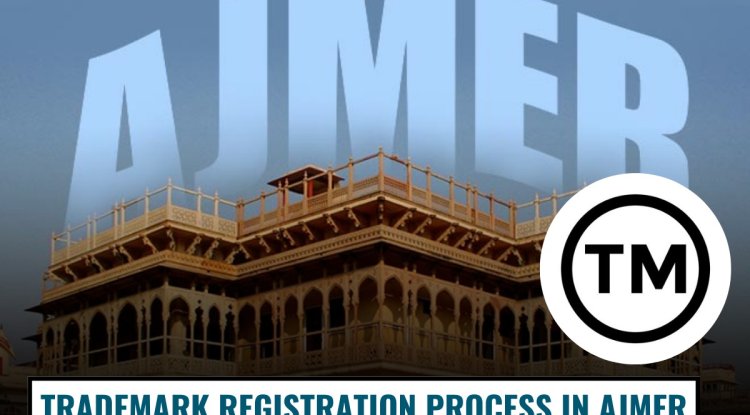Intercontinental Great Brands LLC vs Assistant Controller of Patents and Designs: Prior Art Alone Not Sufficient to Refuse a Patent!
This article explores the recent High Court of Madras ruling in Intercontinental Great Brands LLC and Friesland Campina Nederland B.V. vs Assistant Controller of Patents and Designs, which addresses critical issues in patent examination and refusal. The court reviewed the refusal of a patent application for a soluble foaming composition, focusing on the Controller’s reliance on prior art without adequately considering the applicants' responses and explanations. The case highlights the necessity for a comprehensive evaluation of all submissions in patent applications, emphasizing that prior art alone cannot justify a refusal. This decision underscores the need for a balanced approach in patent adjudication, ensuring that all relevant arguments are considered before denying a patent.

Introduction
In the intricate realm of patent law, the process of granting a patent involves a meticulous examination of the application, including a thorough analysis of prior art to ensure that the invention is novel and non-obvious. The recent judgment by the High Court of Madras in the case of Intercontinental Great Brands LLC and Friesland Campina Nederland B.V. vs Assistant Controller of Patents and Designs provides critical insights into the limits of relying solely on prior art for patent refusal. This case underscores the importance of a balanced and comprehensive evaluation of all submissions and explanations provided by the applicant.
Background of the Case
The dispute originated from a patent application (No.1122/CHENP/2007) filed by Intercontinental Great Brands LLC and Friesland Campina Nederland B.V. The application concerned a soluble foaming composition intended for use in beverages and food products to create froth or foam. The key innovation claimed was a protein-free foaming composition that could produce foam with less than 1% protein, a significant departure from existing compositions that contained higher protein levels.
The Controller of Patents and Designs initially raised objections based on several prior art documents, asserting that the invention was either a mere discovery of a scientific principle, obvious to a person skilled in the art, or inadequately disclosed. The objections included concerns under sections 2(1)(ja), 3(e), and 10(4) of the Patents Act, 1970. Specifically, the Controller questioned the independence of several claims and the adequacy of the application’s disclosure.
Despite amendments and detailed responses from the appellants, the Controller remained unsatisfied and refused the patent application. The appellants argued that their invention was distinct due to its protein-free nature and challenged the relevance of the cited prior art. They contended that the Controller’s refusal was based on an incomplete assessment of their arguments and explanations.
The Controller’s Decision
The Controller’s decision primarily relied on prior art documents D1-D4, which the Controller used to argue that the invention lacked novelty and inventive step. Document D1 and D2 were cited for containing high protein levels, while D3 and D4 were considered less relevant. The Controller also questioned the independence of claims 21 and 26, treating them as extensions of claims 1 and 18, and criticized the application’s disclosure as insufficient.
The appellants’ response to the first examination report (FER) included amendments to the claims and detailed explanations addressing the objections raised. However, the Controller’s subsequent hearing and written submissions were deemed inadequate, leading to the refusal of the patent application.
Court’s Analysis and Findings
The High Court of Madras found that the Controller’s approach was flawed, as it relied primarily on prior art without adequately considering the appellants’ arguments and explanations. The court emphasized that a balanced evaluation of all submissions is essential before refusing a patent application.
In addition to addressing the specific issues of the case, the court provided a broader analysis of how inventive step should be assessed. This aligns with the principles established in Microsoft Technology Licensing LLC vs. Assistant Controller of Patents and Designs. The court reiterated that the assessment of inventive step involves a two-step process:
- Identification of Features: Determine if the features of the invention involve technical advancement or economic significance over prior knowledge.
- Evaluation of Obviousness: Assess whether these features make the invention non-obvious to a person skilled in the art (PSITA).
The court stressed the importance of identifying the PSITA—defined as a software engineer with an understanding of hardware/computer electronics in this case—and evaluating the invention from their perspective. This approach ensures that the inventive step is assessed based on the actual skill level and knowledge available to those skilled in the art.
Key Principles for Analysis of Inventive Step
The principles for evaluating inventive step have been elaborated in various judgments, including the recent High Court of Madras order in Frito-Lay Trading Company-Gmbh vs The Assistant Controller of Patents and Designs. The court referred to the principles outlined in Bristol-Myers Squibb Holdings Ireland Unlimited Company and others v. BDR Pharmaceuticals International Pvt. Ltd. and another, which include:
- Avoiding Hindsight Reconstruction: The assessment should not use the patent in question as a guide to reconstruct prior art in a way that achieves the claimed result.
- No Teachings Away: The prior art should not suggest teachings that would lead away from the claimed invention.
- Mosaic of Prior Art: While combining prior art documents is permissible, it must be demonstrated how a person of ordinary skill in the art would be led to combine these components.
These principles reinforce that the assessment of inventive step must avoid retrospective reconstruction and focus on how the invention is perceived in the context of prior art and the skill level of the PSITA.
Implications of the Ruling
The High Court’s decision in this case has significant implications for the patent examination process. It reinforces the principle that patent refusals cannot be based solely on prior art without a thorough consideration of the applicant’s arguments and explanations. This ruling mandates that patent controllers must engage with all aspects of the application and responses to provide a fair and comprehensive assessment.
The case also highlights the importance of detailed and well-supported patent claims. Applicants must ensure that their submissions address potential objections and demonstrate the novelty and inventive step of their inventions. However, it is equally crucial for the patent office to consider these submissions impartially and thoroughly.
Conclusion
The High Court of Madras’s decision in Intercontinental Great Brands LLC and Friesland Campina Nederland B.V. vs Assistant Controller of Patents and Designs underscores a critical aspect of patent law: the necessity for a balanced and comprehensive evaluation of all submissions and prior art. The court’s ruling serves as a reminder that the patent examination process must not be unduly influenced by prior art alone but should consider the full context of the applicant’s arguments and explanations. This decision reinforces the principle of fairness in patent adjudication and aims to ensure that inventions deserving of patent protection are not unfairly rejected due to an incomplete evaluation process.












